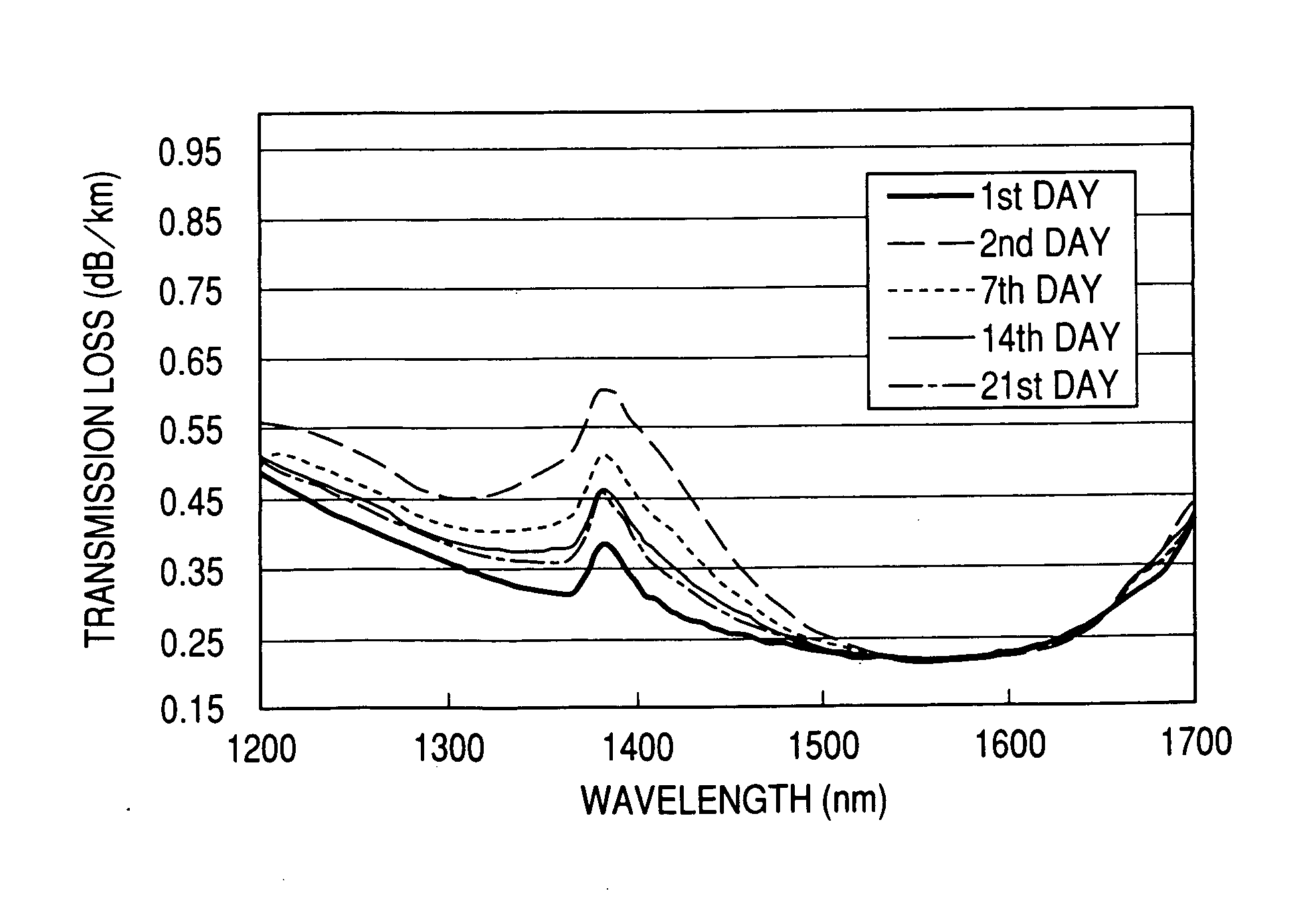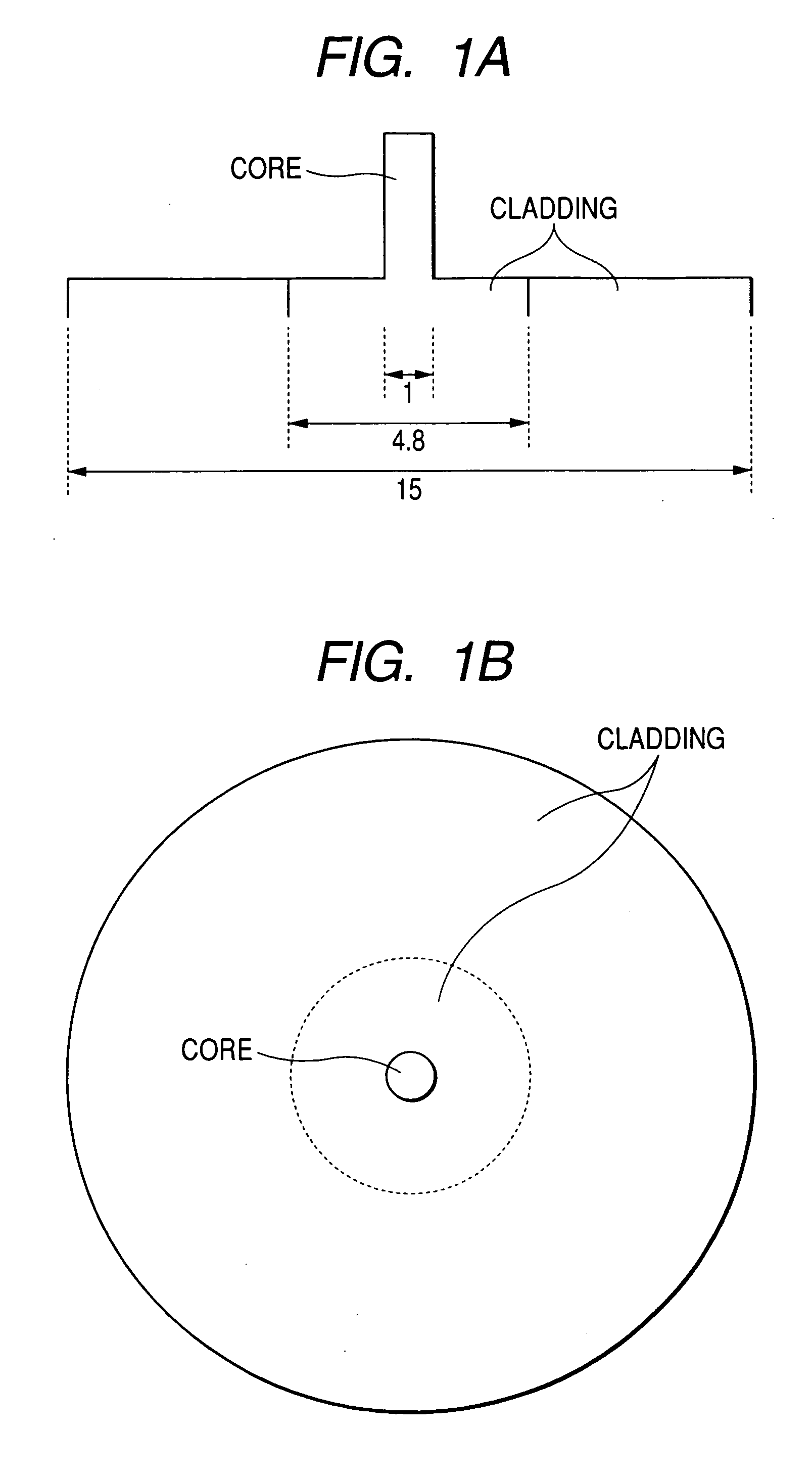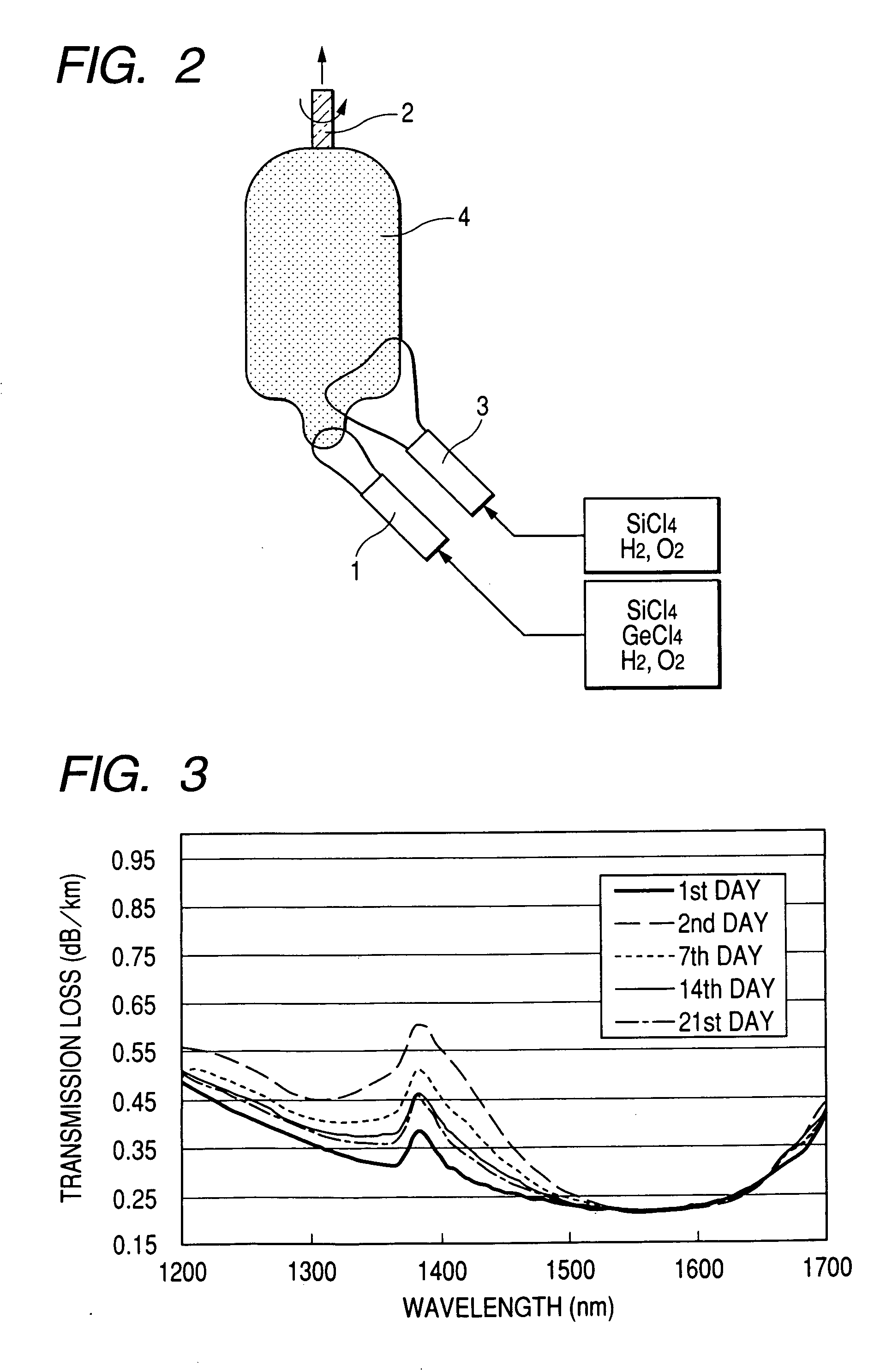Optical fiber, evaluation and fabrication method thereof
a technology of optical fiber and fabrication method, applied in the field of single-mode optical fiber, can solve the problems of increasing transmission loss, difficult transmission in the vicinity of this wavelength, and prone to more residues at higher cooling rate, and achieve the effect of increasing the electron spin density of porous
- Summary
- Abstract
- Description
- Claims
- Application Information
AI Technical Summary
Benefits of technology
Problems solved by technology
Method used
Image
Examples
examples
[0025] Hereinafter, the present invention will be illustrated by way of examples.
[0026] A. Fabrication of an Optical Fiber
[0027] 1. An Optical Fiber for a Fabrication Object
[0028] An optical fiber according to the present invention may have various refractive index profiles. However, for illustrating the gist of the present invention as simply as possible, the examples employed a single mode fiber (SMF) having a zero dispersion wavelength in a 1.3-μm band as a production kind, and a most common refractive index profile of a step index fiber in which a core is covered with a cladding as shown in FIG. 1(A). The diameter of the cladding was the most common at approximately 125 μm, and that of the core was approximately 8.3 μm.
[0029] 2. Fabrication of an Optical Fiber Preform
[0030] An optical fiber preform was fabricated by vapor-phase axial deposition (VAD) method as shown in FIG. 2. A porous preform 4 was formed on a rotating target rod 2 by blowing a soot from a hydrolysis burne...
PUM
| Property | Measurement | Unit |
|---|---|---|
| outer diameter | aaaaa | aaaaa |
| wavelength range | aaaaa | aaaaa |
| wavelength range | aaaaa | aaaaa |
Abstract
Description
Claims
Application Information
 Login to View More
Login to View More - R&D
- Intellectual Property
- Life Sciences
- Materials
- Tech Scout
- Unparalleled Data Quality
- Higher Quality Content
- 60% Fewer Hallucinations
Browse by: Latest US Patents, China's latest patents, Technical Efficacy Thesaurus, Application Domain, Technology Topic, Popular Technical Reports.
© 2025 PatSnap. All rights reserved.Legal|Privacy policy|Modern Slavery Act Transparency Statement|Sitemap|About US| Contact US: help@patsnap.com



